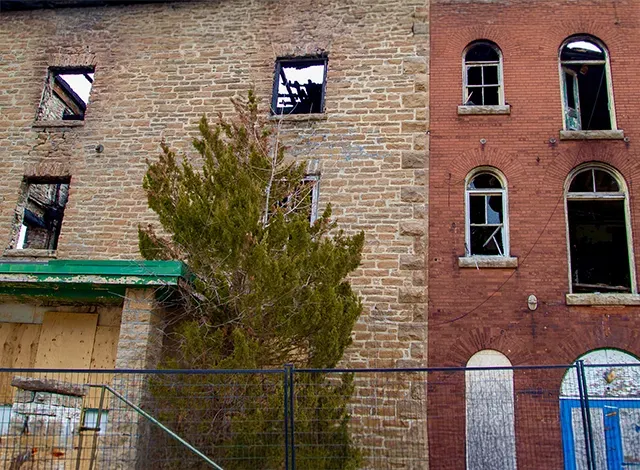LAURIE WEIR
Municipalities have faced higher premiums and reduced coverage options over the past four to five years.
Smiths Falls councillors heard this news from their insurance provider, Matthew Whyte of Halpenny Insurance Brokers Ltd., during a regular committee of the whole meeting on Jan. 13.
Whyte advocates for the municipality with insurance companies to secure the best deals and serves as the town’s representative on claims and losses.
Municipalities are seeing higher premiums due to extreme weather events, higher award settlements, rising future care costs, and class-action lawsuits, Whyte noted.
“I know the derecho that happened in 2022 impacted Smiths Falls,” he said of the high windstorm that swept through several municipalities, knocking down trees, toppling power lines, and damaging properties. This storm resulted in $3.6 billion in losses – the fifth-largest loss in Canadian history.
He added that future care costs for lawsuits against municipalities are also escalating.
“Municipalities are one of the targets (for lawsuits) that we’re seeing impacted the most,” he said. “A good plaintiff lawyer only needs to prove one per cent liability against the township to recover 100 per cent of the damages.”
Whyte said there have been positive trends in recent insurance renewals. “We’re starting to see signs of stabilization,” he said, noting that he recently worked with neighbouring municipalities on their renewals.
Things are improving, he said, but significant weather events across Canada still give him “cautious optimism.”
The summer of 2024 ranks as the most destructive season in Canadian history due to severe weather. He said the highest dollar amount of damage occurred during the Toronto and southern Ontario floods, the Jasper, Alta., wildfires, the Calgary hailstorm, and the Quebec floods, totalling $7.7 billion in losses.
By comparison, the ice storm of 1998 resulted in $2.9 billion in losses, while the Fort McMurray wildfire in 2016 caused $6.2 billion in damages.
“The trend is we’re seeing a lot more significant claims years in increasing frequency,” Whyte said.
For the March renewal for the town, Whyte noted there is some good news despite the multi-million-dollar loss of the old water treatment plant on Old Mill Road.
He said their insurance provider has given them an early indication that, provided there are no other adverse loss developments between now and the end of March, premiums are expected to increase by 10 to 12 per cent over last year.
Compared to other municipalities, Whyte said this is a reasonable renewal. Other municipalities experiencing a loss of this size would likely see a much larger premium increase.
Chief administrative officer Malcolm Morris said the first draft of the budget allowed for a 25 per cent premium increase. A 10 per cent increase means the town is looking at $75,000 less than what had been budgeted for 2025 – but it’s still eight points above inflation.
“We paid just under $580,000 in 2024 for all town insurance,” noted Paul Dowber, the town’s director of corporate services/treasurer. “The information we received in late fall of 2024 indicated a 25 per cent increase. The updated information presented on Monday, Jan. 13, 2025 was that we would see a 10 to 12 per cent increase, which is approximately $75,000 less than what was estimated in the first draft of the budget presented to council Dec. 9, 2024.”
Mayor Shawn Pankow asked about long-term forecasting in light of climate change and whether the town could do anything to mitigate such increases.
Morris said the town’s most significant program to avoid slips and falls, addresses irregularities in sidewalks.
The town has completed significant work on curbs and sidewalks at intersections, where elevation changes can occur. “We’re doing a lot of pre-emptive work to try and make for a safer community,” he said. “Slips and falls are always an area that we’re focussed on. With the level of snow clearing, winter control and grip application that we put on streets and sidewalks, that helps mitigate those opportunities for loss to occur.”
The town is also working to be more assertive when defending claims, Morris said, but climate change risks are harder to address.
“They require infrastructure solutions,” Morris said, adding that the town is fortunate the Rideau Canal’s water levels are controlled, reducing its susceptibility to flooding compared to other communities.
“We’ll never eliminate the risks,” Morris noted, “but we can certainly continue to manage them.”



